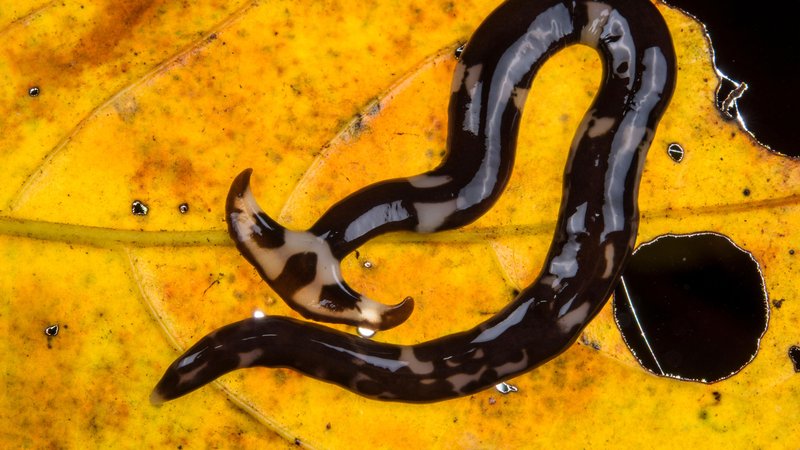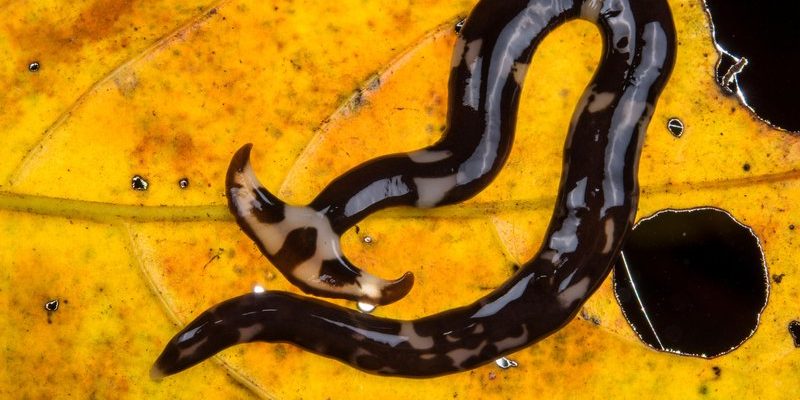
So, what are hammerhead worms? Imagine a tiny snake with a flattened head that resembles a hammer. These worms can be quite invasive, preying on earthworms and other beneficial organisms. If you’ve spotted one in your garden, it’s important to act quickly. Let’s dive into the signs of a hammerhead worm infestation and learn how to protect your green space.
What is a Hammerhead Worm?
Before we jump into signs of an infestation, let’s clarify what these creatures are. Hammerhead worms (scientific name *Bipalium kewense*) are flatworms native to tropical regions, but they’ve made their way to various places around the world, including the United States. They typically range from 5 to 15 inches long, and their unique hammer-like heads are hard to miss.
These worms are not just visually striking—they also have a reputation for being predators. They primarily feed on earthworms, which are crucial for maintaining healthy soil. While they might seem harmless, their presence can indicate a disruption in your garden ecosystem.
Honestly, it’s a bit unsettling to think that something that looks so alien might be munching on your earthworms, right? So how do you know if these guys have taken up residence in your garden? Let’s find out.
1. Strange Movements in Your Garden
One of the first signs you might notice of a hammerhead worm infestation is their unusual movement. Unlike earthworms that wriggle, hammerhead worms glide smoothly along the soil. It’s almost as if they’re swimming through the ground.
You might see them creeping around during the early morning or after a rainstorm. Their flat bodies can make them look a bit like ribbons as they move. If you’ve got a good eye, you might spot them when you’re out watering your plants or tending to your garden beds.
If you see something that resembles a flat, elongated snake with a distinctive hammer-shaped head, it’s likely a hammerhead worm. They come in various colors, including brown, green, or even gray, so keep an eye out for those shapes that don’t belong.
2. Declining Earthworm Population
Now, let’s talk about a more serious concern: the health of your garden’s soil. Earthworms are essential for aerating soil and enhancing its nutrient content. If you start noticing fewer earthworms in your garden beds, it might be time to investigate.
When hammerhead worms invade, they often feast on earthworms. If you dig around and find a significant drop in earthworm activity, this could be a telltale sign that those pesky flatworms are lurking nearby.
Here’s the thing: without earthworms, your plants can struggle. They rely on these little workers to keep the soil healthy and full of life. So if your garden suddenly feels less vibrant, it might be worth checking for these unwanted guests.
3. Distinctive Shape and Color Characteristics
Identifying hammerhead worms is crucial when assessing your garden’s health. As mentioned, they have a unique hammer-shaped head, which sets them apart from other worms. Look closely, and you’ll notice they have a flat, smooth body that can either be light or dark in color.
Most commonly, they have a dark brown or grayish hue with lighter shades underneath. When they’re threatened, these worms can even produce a mucous secretion that makes them look slimy, which is another characteristic to observe.
If you’re unsure about your findings, snap a picture and compare it with online resources or gardening communities. Trust me, identifying these worms correctly can save your garden from further harm.
4. Damage to Plants
Another alarming sign of a hammerhead worm infestation is the potential damage to your plants. While these worms primarily feed on earthworms, they can indirectly harm your garden by disrupting the soil ecosystem. This disruption can lead to weaker plants and reduced growth.
You might notice wilting or yellowing leaves, which could be a result of a compromised root system. If your plants are struggling to thrive and you’ve already ruled out other causes—like pests or diseases—it might be worth considering a hammerhead worm problem.
Regularly inspect your plants for health signals. If you catch signs of distress, it’s time to investigate further and take action to protect your garden.
5. Drenching and Unsafe for Pets
If you’re a pet owner, this is an important point to consider. Hammerhead worms can secrete a toxic substance when threatened. While they’re not typically harmful to humans, they can be dangerous to pets if ingested. Imagine your dog finding one of these worms and thinking it’s a snack!
If you suspect an infestation, keep a close eye on your pets. Since these worms often thrive in moist environments, you might notice them appearing more frequently after rain or watering. If your garden is a playground for your furry friends, double-check their surroundings for any rogue hammerhead worms.
Taking preventive measures can help keep both your garden and pets safe.
6. How to Manage a Hammerhead Worm Infestation
Now that you’ve identified some signs of a hammerhead worm infestation, it’s essential to know how to manage it. Here are some simple strategies you can implement:
- Remove by Hand: If you spot a hammerhead worm, wear gloves and gently pick it up. Dispose of them in a sealed bag to prevent them from returning.
- Soil Health: Focus on boosting the health of your soil. This means adding organic matter and ensuring a balanced ecosystem that encourages earthworm populations.
- Water Management: Avoid overwatering your garden, as hammerhead worms thrive in moist conditions. Let your garden dry out a bit to make it less hospitable for them.
- Biological Control: Look for natural predators in your garden, like birds or beneficial insects, to help manage the worm population.
It’s vital to act quickly. Managing an infestation can prevent long-term damage to your garden and keep your plants thriving. Remember, it’s all about maintaining a balanced ecosystem!
7. Prevention Tips for Your Garden
Preventing a hammerhead worm infestation is much easier than dealing with one once it happens. Here are some tips to keep these unwelcome guests at bay:
- Regular Inspections: Keep an eye on your garden. Regularly check for any unusual movements or signs of stress in your plants.
- Healthy Soil Practices: Focus on improving soil quality with compost and organic matter. Healthy soil attracts earthworms, making it less appealing for hammerhead worms.
- Moderate Watering: Be mindful of how much water you give your plants. Hammerhead worms thrive in overly moist environments.
- Education: Stay informed about garden pests and visitor species. Knowledge is your best defense!
By implementing these prevention strategies, you’ll create a thriving garden that’s less likely to fall victim to hammerhead worms.
In conclusion, being aware of the signs of a hammerhead worm infestation can help protect your garden. From unusual movements to declines in earthworm populations, these indicators are essential to recognize. By knowing what to look for and how to manage these pests, you can keep your garden healthy and flourishing. Remember, a little awareness and proactive care go a long way in maintaining your green sanctuary!

